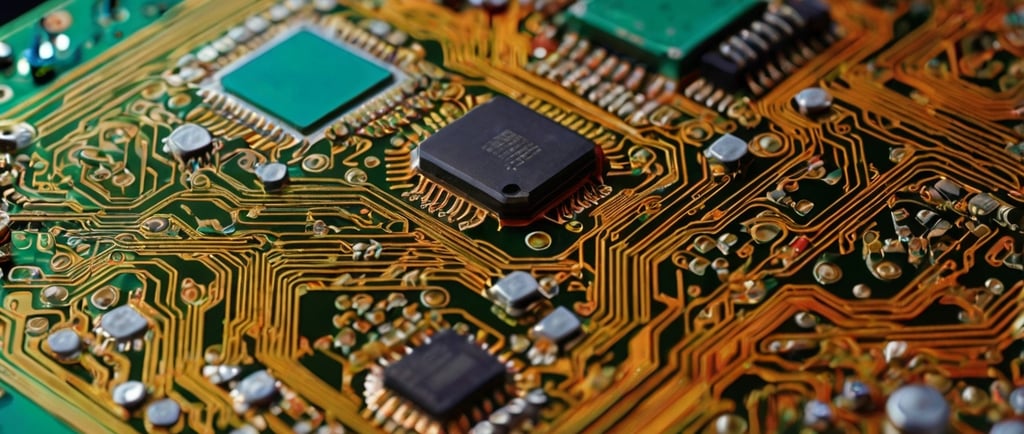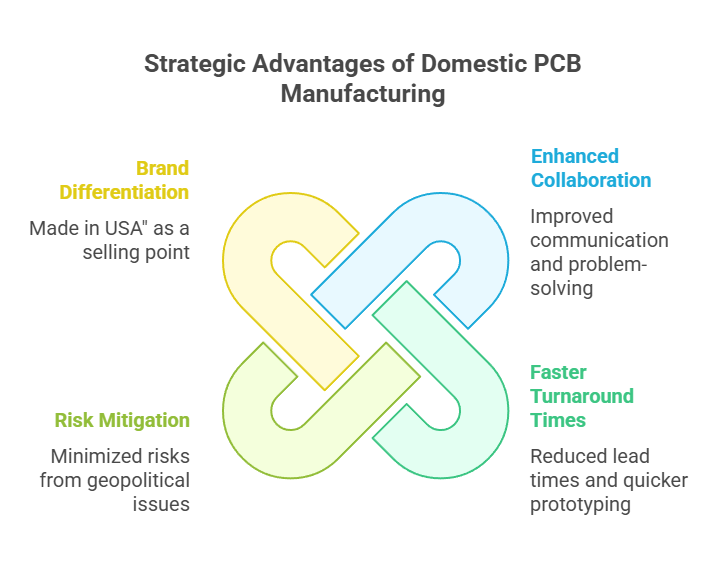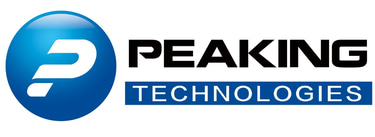Why U.S. PCB Manufacturing Matters: A Strategic Guide for Hardware Startups and Inventors
Over the past two decades, the U.S. share of global PCB production has plummeted from approximately 26% to a mere 4%, while China's share has soared to over 50% .
JoeZ
5/30/20253 min read


In the evolving landscape of electronics manufacturing, the resurgence of U.S.-based printed circuit board (PCB) production is more than a patriotic endeavor—it's a strategic imperative. For hardware startups and inventors, understanding the significance of domestic PCB manufacturing can be the key to innovation, security, and market success.
The Current State of PCB Manufacturing
Over the past two decades, the U.S. share of global PCB production has plummeted from approximately 26% to a mere 4%, while China's share has soared to over 50% . This shift has raised concerns about supply chain vulnerabilities, national security, and the erosion of domestic manufacturing capabilities.
Recognizing these challenges, Representatives Blake Moore (R-UT) and Anna G. Eshoo (D-CA) introduced the bipartisan "Protecting Circuit Boards and Substrates Act" in May 2023. This legislation aims to revitalize domestic PCB production through incentives such as a 25% tax credit for purchasers of American-made PCBs and a $3 billion investment in factory construction, workforce development, and research and development .
Why Domestic PCB Production Matters
1. National Security and Supply Chain Resilience
PCBs are integral to virtually all electronic devices, including those used in defense, healthcare, and critical infrastructure. Relying heavily on foreign suppliers, particularly from geopolitical rivals, poses risks of supply disruptions and potential tampering. A notable concern is the possibility of malicious components being inserted into PCBs during manufacturing, compromising the security and functionality of critical systems .
By bolstering domestic PCB manufacturing, the U.S. can mitigate these risks, ensuring greater control over the supply chain and enhancing national security.
2. Economic Competitiveness and Innovation
Investing in domestic PCB production supports high-skilled jobs and fosters innovation. U.S.-based manufacturers often specialize in advanced technologies, such as high-density interconnect (HDI) PCBs and flexible PCBs, catering to industries like aerospace, medical devices, and telecommunications .
Moreover, proximity to manufacturing facilities facilitates better collaboration between design and production teams, accelerating the development cycle and enabling rapid prototyping—a critical advantage for startups and inventors.
3. Intellectual Property Protection
Protecting intellectual property (IP) is paramount for innovators. Manufacturing PCBs domestically reduces the risk of IP theft, which has been a concern with some overseas manufacturers. U.S. manufacturers are subject to stringent legal frameworks that safeguard proprietary designs and technologies .
4. Quality Assurance and Compliance
U.S. PCB manufacturers adhere to rigorous quality standards and environmental regulations, ensuring the production of reliable and compliant products. This is particularly important for applications where failure is not an option, such as in medical devices or aerospace systems .
Implications for U.S. and Chinese Electronics Manufacturers
The push for domestic PCB production in the U.S. has significant implications for both American and Chinese electronics manufacturers.
For U.S. companies, this shift presents an opportunity to reclaim a critical segment of the electronics supply chain, reduce dependency on foreign suppliers, and stimulate economic growth through job creation and technological advancement.
Conversely, Chinese manufacturers may face challenges as U.S. companies diversify their supply chains and reduce reliance on Chinese-made PCBs. This could lead to increased competition and necessitate strategic adjustments in the global electronics manufacturing landscape.


Strategic Considerations for Hardware Startups and Inventors
For hardware startups and inventors, the resurgence of domestic PCB manufacturing offers several strategic advantages:
Enhanced Collaboration: Proximity to manufacturers allows for better communication, quicker iterations, and more effective problem-solving during the development process.
Faster Turnaround Times: Domestic production can reduce lead times, enabling faster prototyping and time-to-market—a critical factor in the competitive hardware space.
Risk Mitigation: Manufacturing domestically minimizes risks associated with geopolitical tensions, trade restrictions, and supply chain disruptions.
Brand Differentiation: "Made in USA" can be a compelling selling point, appealing to consumers who value domestic production and quality assurance.
Conclusion
The revitalization of U.S. PCB manufacturing is more than a policy initiative; it's a strategic movement that aligns with the interests of national security, economic competitiveness, and innovation. For hardware startups and inventors, embracing domestic PCB production can provide a solid foundation for building resilient, secure, and successful ventures in the dynamic world of electronics.
Sources: Rep. Blake Moore introduces bipartisan bill to strengthen domestic electronics manufacturing
